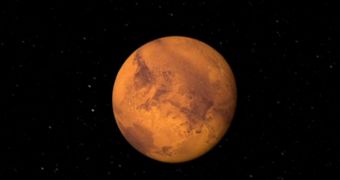Officials at NASA say that the agency's upcoming mission to Mars just passed a critically-important milestone, called the Key Decision Point-D (KDP-D). What this means for the project is that the spacecraft's components, including its instruments, can now be integrated.
This represents that next phase of putting the new orbiter together. Various parts will be shipped from their respective manufacturers, integrated within the spacecraft bus, tested thoroughly, and then launched into space in their final configuration.
The purpose of the Mars Atmosphere And Volatile EvolutioN (MAVEN) mission will be to analyze the chemical signatures present in the Martian atmosphere, and to figure out how the latter evolved over the past few billion years.
Scientists strongly believed that the Red Planet was not always a desolate place, and MAVEN could help prove this. In addition, it will study the ionization process occurring high above the planet's surface, and will attempt to figure out where all the methane in the air is coming from.
This is one of the most mysterious aspects of our neighboring world. Methane is a very short-lived gas; yet, it can sometimes be found in plumes in the Martian atmosphere. This suggests that a replenishing process occurs, and that the world is either geologically or biologically alive.
“The spacecraft and instruments are all coming together at this point. Although we’re focused on getting everything ready for launch right now, we aren’t losing sight of our ultimate objective – getting to Mars and making the science measurements,” Bruce Jakosky explains.
The expert holds an appointment as a professor at the University of Colorado in Boulder, and is also the principal investigator for MAVEN. He adds that the spacecraft will attempt to determine how the loss of gases from the Martian atmosphere influenced the planet's climate long ago.
“I’m incredibly proud of how this team continues to meet every major milestone on schedule on its journey to Mars. Being ready for the start of system level integration and test is critically important to ultimately being ready for launch on November 18, 2013,” adds David Mitchell.
The expert holds an appointment as the MAVEN project manager, and is based at the NASA Goddard Space Flight Center (GSFC), in Greenbelt, Maryland. He says that the decision about the KDP-D milestone was taken at NASA Headquarters, in Washington, on September 10.

 14 DAY TRIAL //
14 DAY TRIAL //